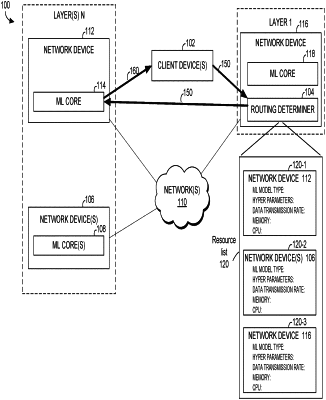| CPC H04L 67/63 (2022.05) [G06N 5/04 (2013.01); G06N 20/00 (2019.01); H04L 67/10 (2013.01)] | 18 Claims |

|
1. A computer-implemented method comprising:
receiving a client request to process data via one or more machine learning processes, the client request being associated with a client device;
comparing a first set of attributes associated with a first network device with a second set of attributes associated with a second network device, the first set of attributes and the second set of attributes include one or more computer resource characteristics of a respective network device and one or more machine learning processing capabilities of a respective network device, the one or more machine learning processing capabilities comprising at least one of a machine learning model type hosted on a respective network device, hyperparameters used in a respective machine learning model, output data post-processing functions, and data paths for input and output data flows;
based at least in part on the comparing, selecting the first network device to route the client request to and refraining from selecting the second network device;
based at least in part on the selecting, causing the first network device to process the client request, the first network device comprising a first machine learning core configured to enable end-to-end processing associated with an object, wherein the object represents any logical entity with a unique signature embedded in an ML input data; and
at least partially in response to the processing of the client request, causing a transmission of data to the client device.
|